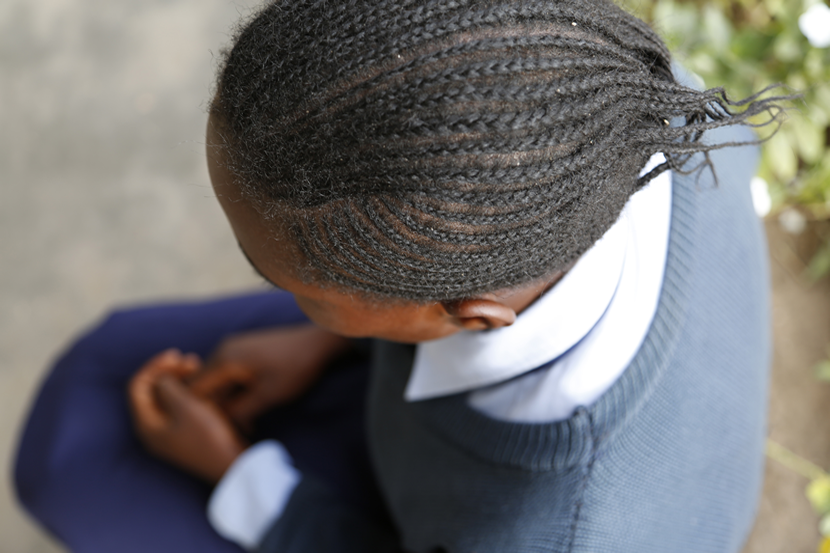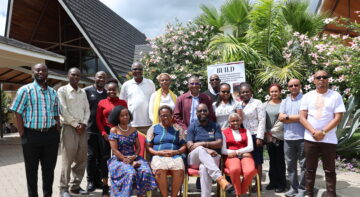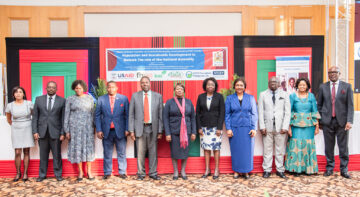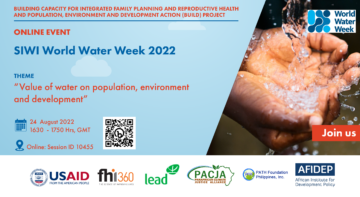Blogs

The World Health Organization (WHO) defines unsafe abortion as a procedure for terminating an unwanted pregnancy either by persons lacking the necessary skills or in an environment lacking minimal medical standards or both.
Unsafe abortion is preventable, yet it is one of the leading causes of maternal mortality in developing countries with Africa worst affected.
In addition, unsafe abortion complications leaves millions temporarily or permanently disabled.
In 2000, 189 countries committed to improve maternal health and reduce global maternal deaths by 75 percent by 2015 relative to the 1990 levels (Millennium Development Goal 5).
This is because countries in the region have failed to meet their commitments to ensure equitable access to reproductive health and rights information and services including contraception and comprehensive abortion care services.
The commitments include those made at the 1994 International Conference on Population and Development and the 2005 inclusion of targets in the Millennium Development Goal 5, to achieve universal access to reproductive health services by 2015.
Unsafe abortion is a major consequence of unintended pregnancy which in turn is a major consequence of high unmet need for contraception.
Unmet need for contraception refers to women who do not want more children or want to wait for two or more years before having another child, but are not using contraception.
Sub-Sahara Africa has the highest unmet need for contraception and unintended pregnancy rates in the world.
AFIDEP’s role in promoting investments in reproductive health and rights to reduce unsafe abortion “ focus on Zambia
The African Institute for Development Policy (AFIDEP) promotes government investments in ensuring the reproductive health and rights of couples through synthesis and translation of evidence that highlights the barriers to, opportunities for and solutions for increasing access to reproductive health and rights information and services.
AFIDEP engages policy makers and the media to increase attention on these issues around the sub-Sahara Africa region.
Currently, AFIDEP is working in collaboration with the University of Zambia (UNZA) and the London School of Economics (LSE) to increase awareness of the abortion law in Zambia, the barriers to accessing safe abortion services in Zambia and the costs of unsafe abortion to Zambian families and healthcare system.
The project which is supported by the Economic and Social Research Council also seeks to increase the capacity of:
- Policy makers including young parliamentarians to strengthen commitment and investments in interventions to reduce unsafe abortion in Zambia;
- Researchers to effectively translate unsafe abortion research evidence and engage policy makers with the evidence to promote its use in decision making; and
- Media to increase the quantity and quality of reporting unsafe abortion stories in Zambia.
In Africa, only 2 other countries have less restrictive laws than Zambia. These are Tunisia and South Africa where induced abortion is permitted on request.
Despite safe abortion services being legally permissible and available in Zambia’s public health and some non-government facilities, the number of unsafe abortions remain high, contributing to 30 percent of maternal deaths “ according to Zambia’s Ministry of Health. The WHO estimates Zambia’s unsafe abortion rate at 30 or more unsafe abortions per 1000 women aged 15-44 years and unsafe abortion mortality ratio at 80 or more maternal deaths due to unsafe abortion per 100,000 live births.
Zambia’s situation goes against the global evidence indicating that regions with less restrictive abortion laws have non-existent or low rates of unsafe abortions relative to regions with restrictive abortion laws.
New study sheds light on why unsafe abortion remains high in Zambia and the estimated costs to families and the healthcare system
Researchers from UNZA and LSE undertook a study between 2012 and 2014 to understand why safe abortion services are not being fully used as well as estimate the costs to women and their families, and the healthcare system.
They found that the main reasons for opting for unsafe abortions are lack of information on the legality and access to safe abortion services and the stigma associated with it.
The researchers interviewed 112 young women aged 14-24 years, at a public hospital where safe abortion and postabortal care services are offered, including 71 who had received safe abortion services and 41 who had received treatment for complications due to unsafe abortion undertaken outside the hospital.
The group that sought safe abortion services was aware of the services or had received advice from family or friends who knew of the services.
Whereas, the group that opted for unsafe abortion was unaware or received advice from family or friends were also unaware of the services.
Women who came to hospital for treatment after initiating an abortion unsafely were more likely to be teenagers or be poor.
The study also established supply side barriers to access to safe abortion services which results in more women going to the hospital for care needed after an unsafe abortion than going in for a safe and legal abortion.
The presence of the abortion law has not translated to the provision of safe abortion services in most health facilities.
Many district and lower level health facilities, particularly in rural areas, are not able to provide safe abortion services due to the lack of trained staff and required drugs, lack of the three doctors required to sign off the decision or a lack of staff willing to provide abortion care.
The study estimated that the healthcare system in Zambia spends 2 to 3 times more treating complications arising from unsafe abortion than it would spend on providing safe abortion.
The country’s healthcare system could save as much as 2.5 million Zambian Kwacha (USD 321,145) every year if women currently treated for complications due to unsafe abortion were to instead access legal safe abortion services.
Furthermore, hospital treatment for complications due to unsafe abortions cost women and their families more compared with going directly to the hospital for a safe and legal procedure.
On average, it cost women over 100 Kwacha (USD 13) more to procure an unsafe abortion and seek care for complications than to procure a safe abortion in a hospital.
Attending the study hospital for a safe and legal procedure cost women an average of 283 Kwacha (USD 36), whereas obtaining an unsafe abortion and the care women needed afterwards cost an average of 389 Kwacha (USD 50).
What African governments must do to reduce unsafe abortion rates in the region
The evidence shows that relaxing abortion laws will help countries in sub-Sahara Africa reduce the unsafe abortion rate and related deaths and accelerate their efforts to reduce maternal deaths.
However, as in the case of Zambia, just having a liberal abortion law in place is not enough. Governments must make investments to enforce the law and ensure that all stakeholders are sensitised and empowered and that services are available.
Efforts should include empowering women about their reproductive health rights (including their freedom to decide whether and when to have a child). The evidence also shows that investing in ensuring access to safe abortion services translates to savings in the healthcare system as well as prevents high out of pocket spending by women and their families.
Furthermore, “prevention is the best medicine’. As noted in the introduction, unsafe abortion is a major consequence of unintended pregnancy which in turn is a major consequence of high unmet need for contraception.
Therefore, preventing unintended pregnancies by promoting contraceptive use would significantly reduce the number of unsafe abortions and maternal deaths in the region.
The evidence from the UNZA and LSE study as well as a national study conducted in Kenya in 2012 reveal that unsafe abortion are most common among adolescents.
Thus, governments must increase investments in ensuring that sexual and reproductive health information and services are friendly and widely accessible to adolescents and young people.
From our interaction with policymakers and media professionals in Zambia, it is evident that there is a conflict between people’s moral position on abortion and their experience with abortion.
Whilst many believe that it is morally wrong to procure an abortion, in alignment to their Christian beliefs and teachings, majority indicated that they know of a person that has had an abortion.
A media professional in one of our sensitisation workshops captured this paradox well when participants were asked to voice their thoughts when they see the word “abortion’.
He gave the response “I see it as morality versus reality”. Notably, the women interviewed in the UNZA and LSE study were from various Christian denominations including from the Catholic faith.
Religion will continue to play a major role on issues that relate to reproductive health and rights but, if progress is to be made, policy makers must also consider empirical evidence in their decision-making processes.
Violet Murunga is Senior Research and Knowledge Translation Officer, AFIDEP
Related Posts





